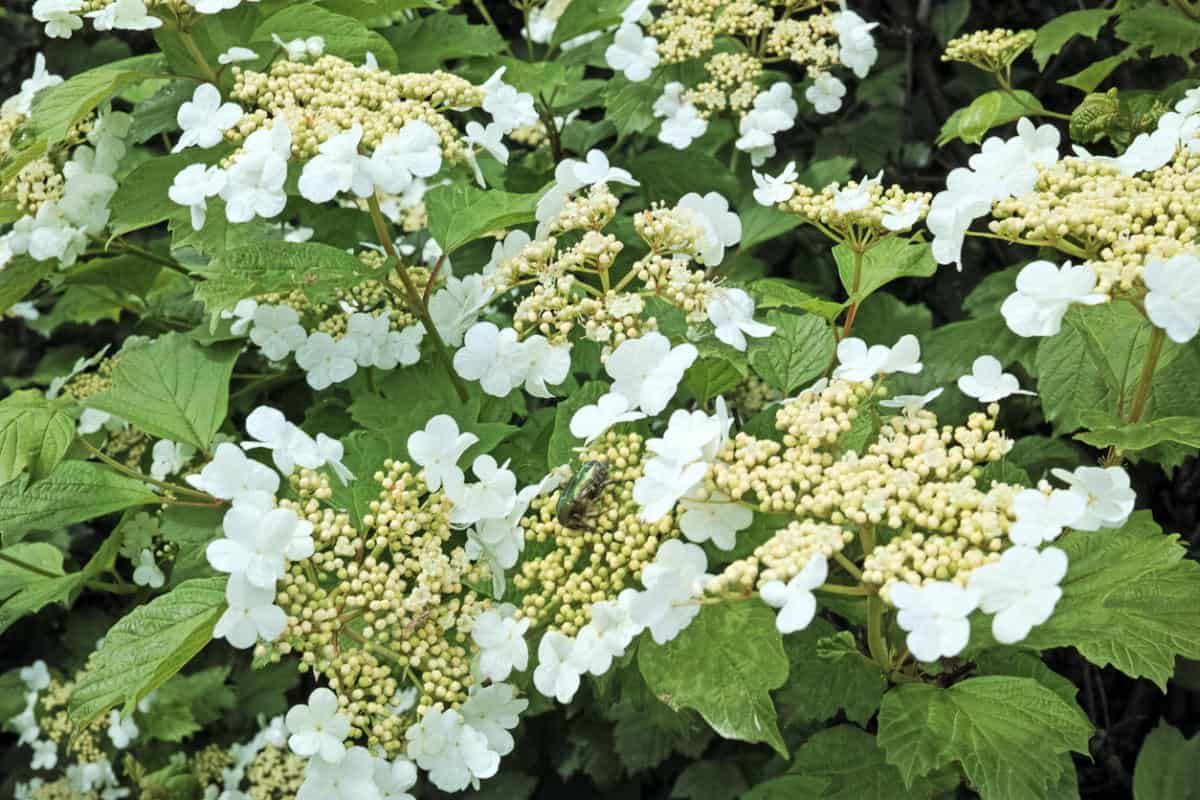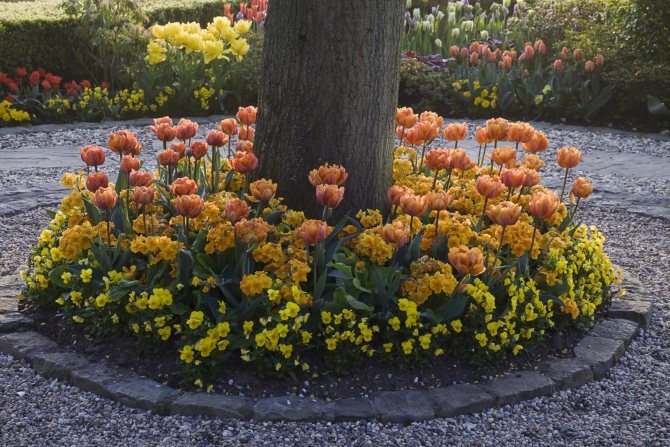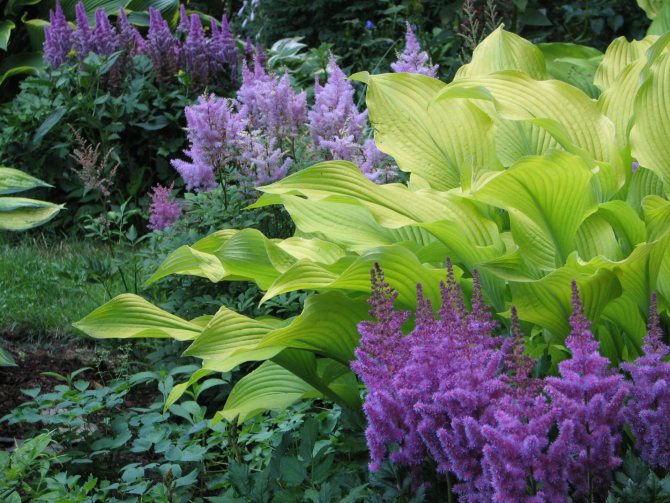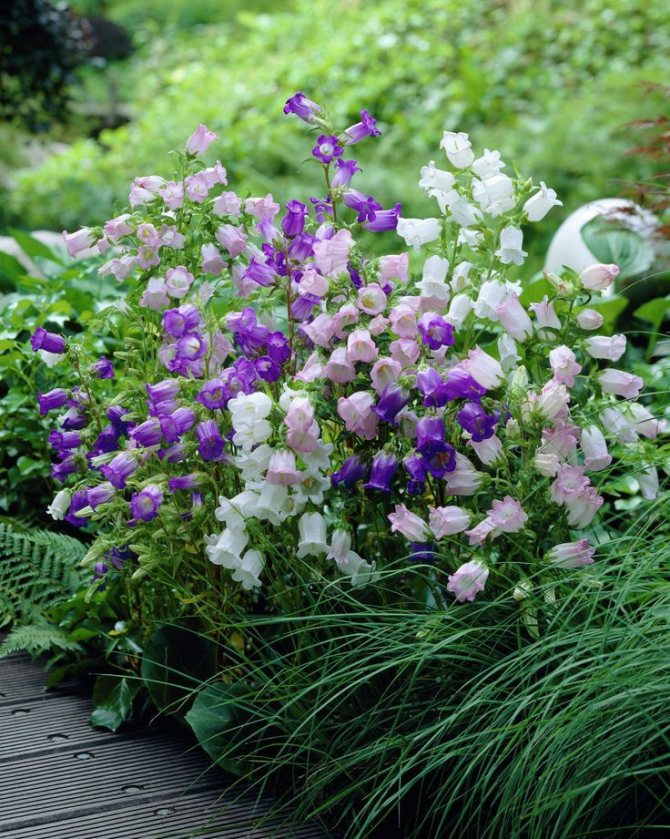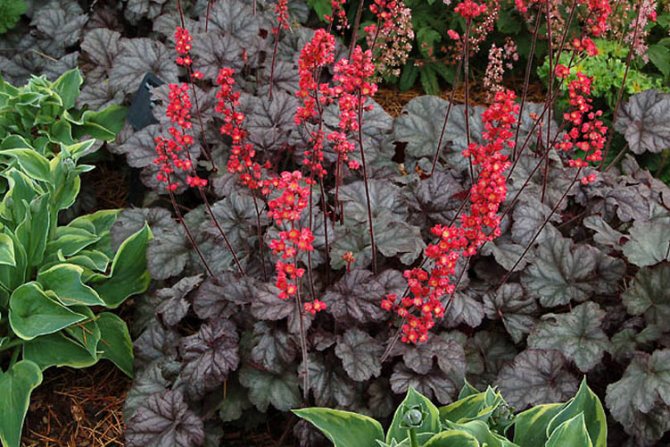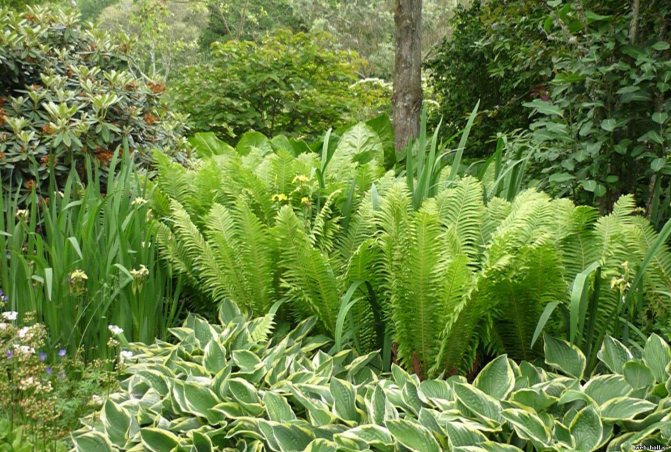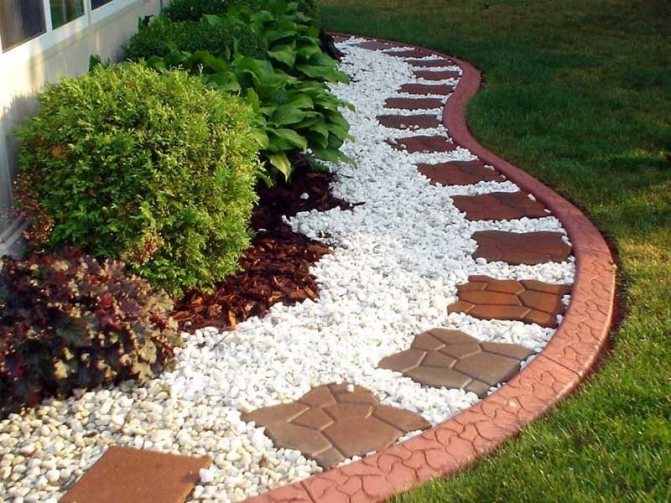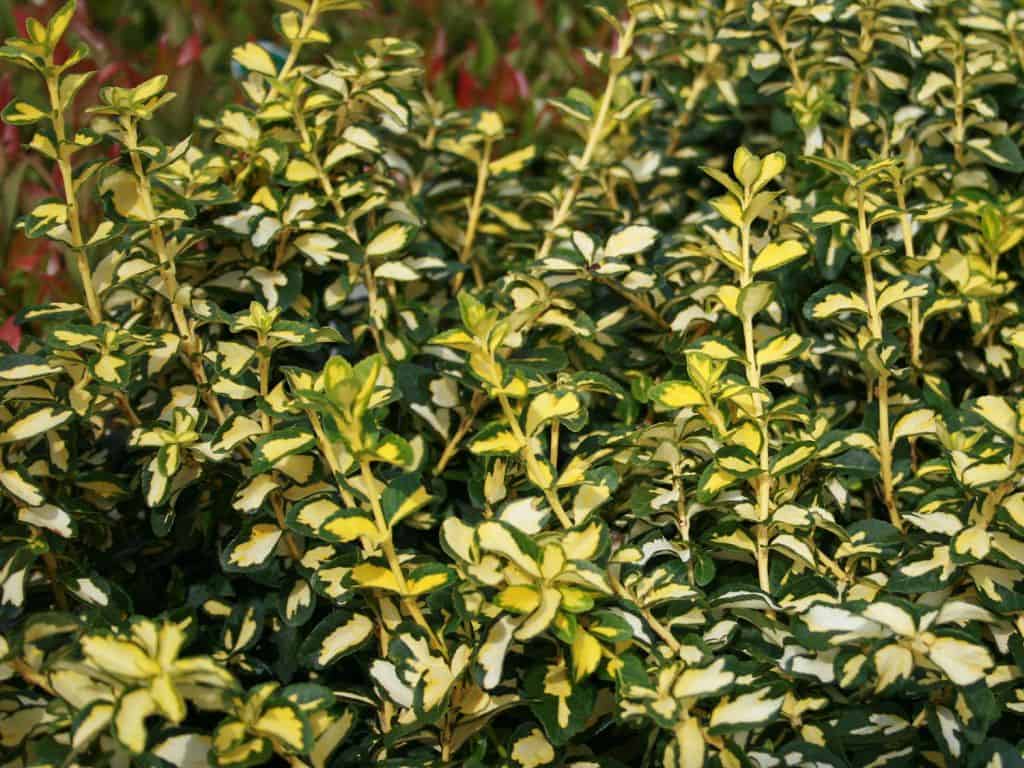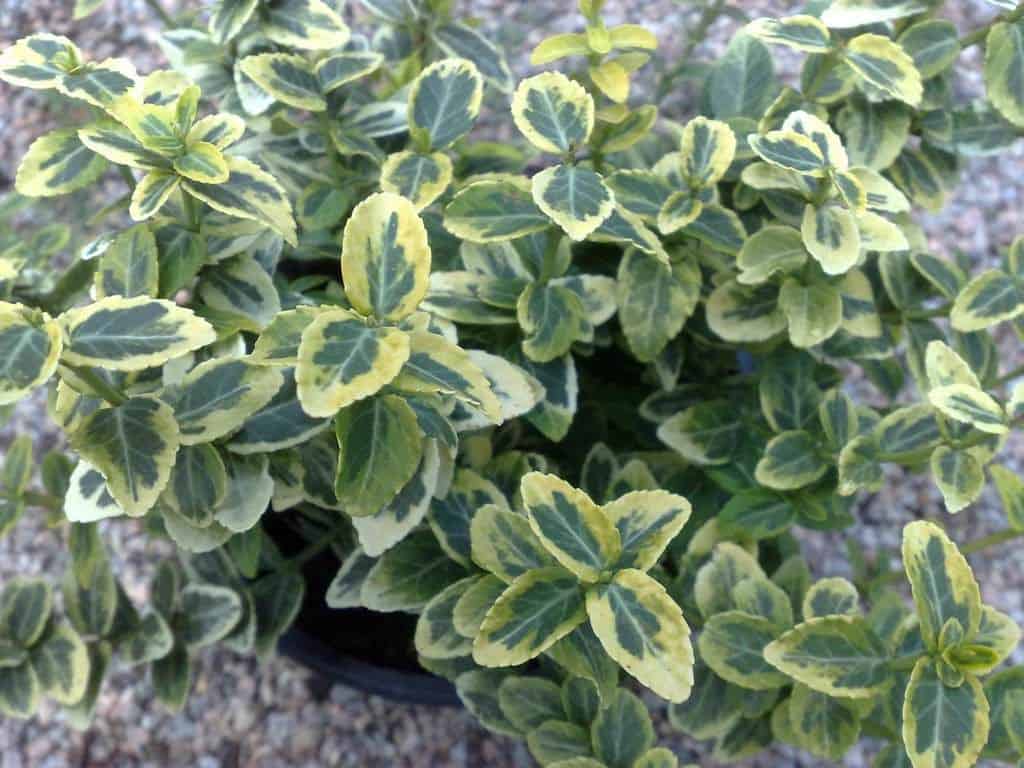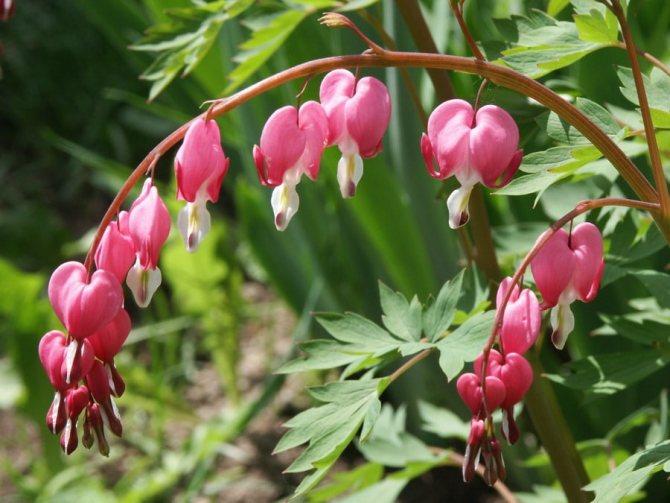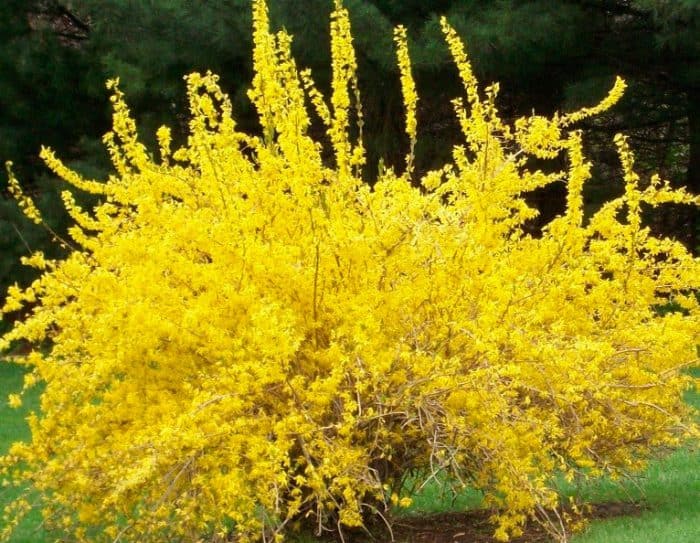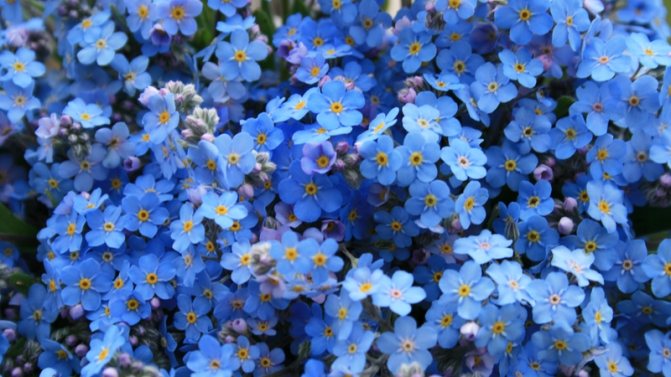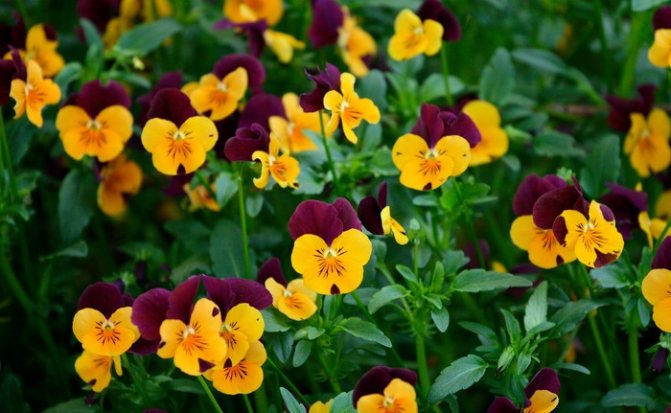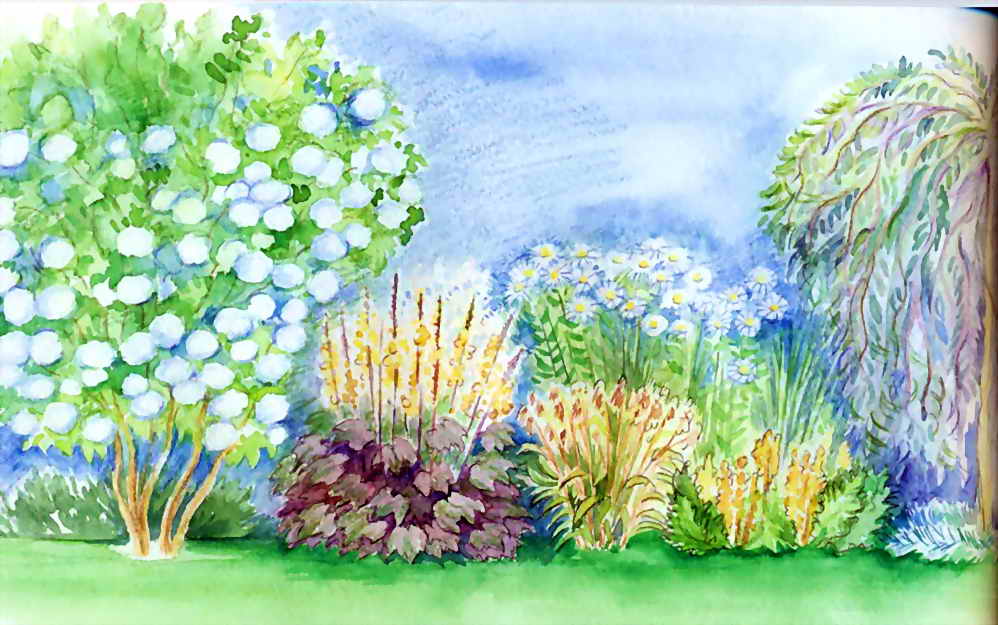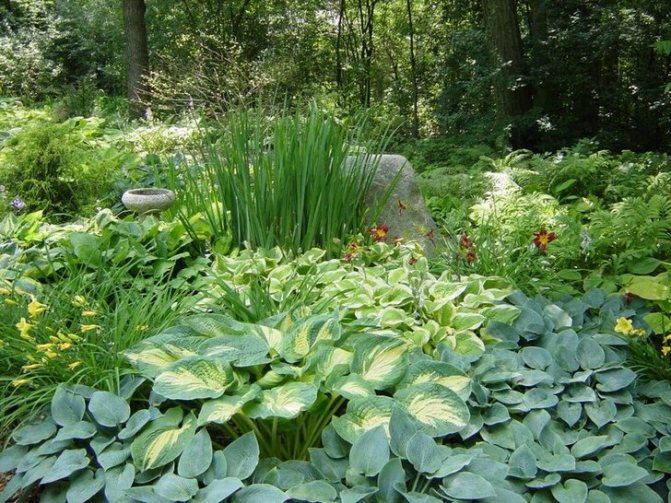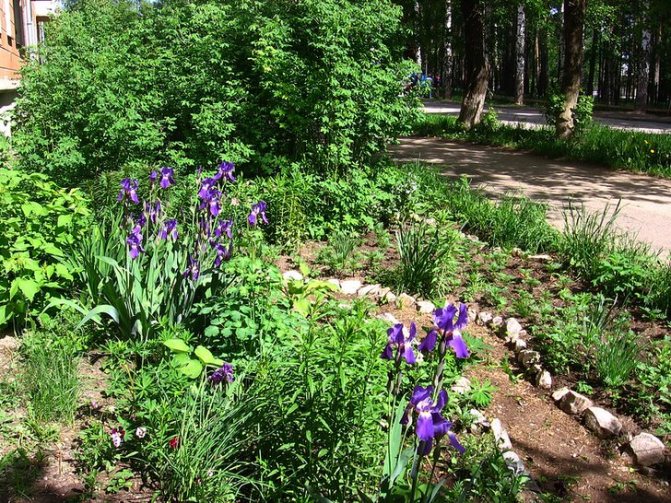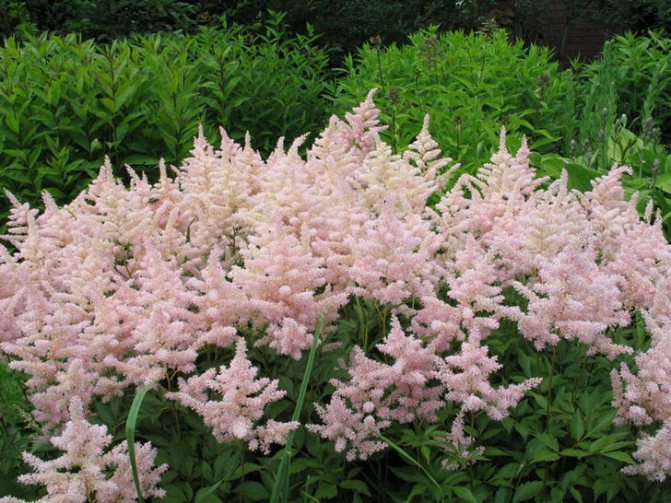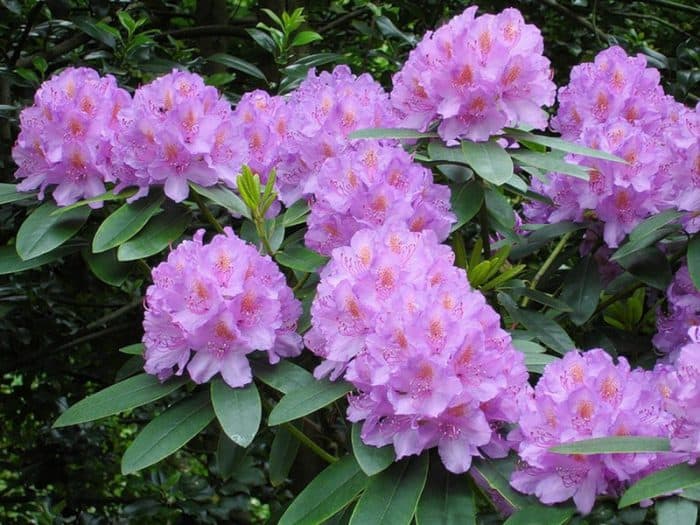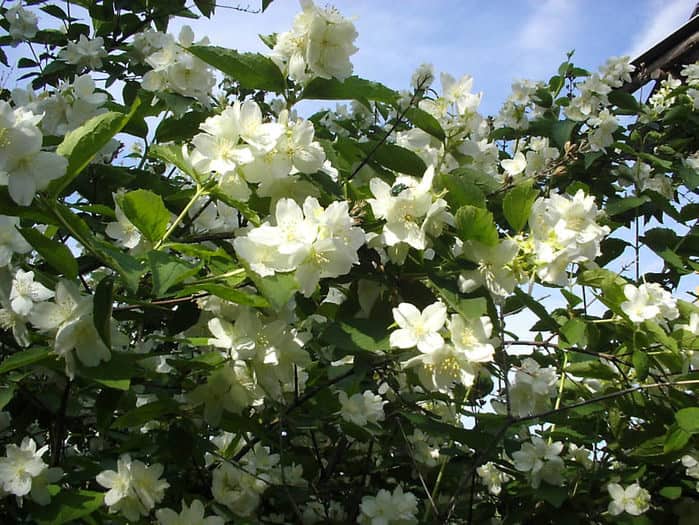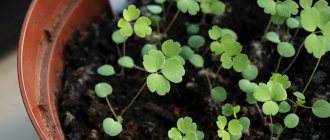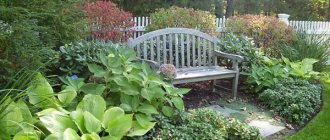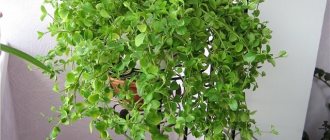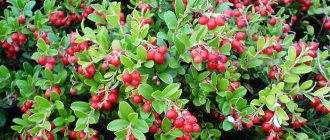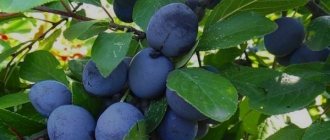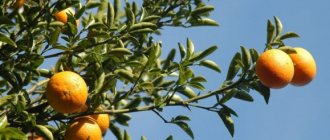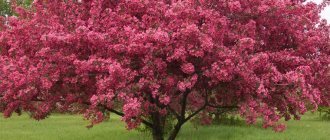Any farmer strives to use every meter of his summer cottage as efficiently as possible. One of the most difficult questions to solve in this regard: what to plant in the shade in the country? Shade-loving plants - a catalog of garden and horticultural crops is in this article on our site about farming - this is the best solution.
When discussing this issue, it is important to take into account that the degree of shading of the areas is different. For example, an area on the north side of a building or fence will be out of the sun for most of the day, while other areas may be shaded for only a fraction of the day. Many light-loving crops can grow in a slightly shaded area.
Shade-tolerant and shade-loving trees
Only a small number of trees can be planted between the house and the fence, that is, where there is the least amount of sunlight. It is difficult to grow and develop well in such conditions. However, there are tree species that will brighten up the shaded corner of your property. A little patience with this and you will know which trees to plant along the fence to improve the look of the entire estate.
Although most conifers prefer sunny, open areas, there are specimens for planting in front of a house or fence, where there is little sun. From the street side, such shade-tolerant conifers are most often planted, such as:
- Yew pointed "Nana". This compact tree will feel great in areas that are illuminated by the sun for a very short time. Small dimensions (height - up to 90 cm, crown diameter - from 0 to 90 cm) allow planting this yew variety in front of the house from the street side, as well as between the house and the fence. Yew Nana grows slowly, preferring moist, loose soil. It is great if the snow cover is very high in the region in winter.
Yew pointed "Nana"
- Siberian fir. The shade-tolerant plant thrives in the northern regions of our country, where it is widely used by landscape design specialists. It grows slowly until the age of ten. The decorative effect of this variety of fir is especially evident in the spring, when young cones have a purple hue, and male oval inflorescences are brownish-red or yellow with a red bloom. Siberian fir can grow well in sunny places. Therefore, it can be used to decorate the corner where during the day the sun is replaced by a shadow.
Siberian fir
- Viburnum ordinary. This woody flowering plant thrives in shade. Low-growing trees reach a height of no more than 90 cm. Kalina can be planted as a hedge in front of the house from the street side, replacing the usual fence.
Viburnum ordinary grade "Roseum"
- Rowan. The trees, decorated with clusters of brightly colored umbrellas with berries, are unpretentious to growing conditions. With their help, beautiful contrasting compositions are created. Rowan can be safely planted in a corner where other plants do not take root well.
July 20,
The dream of any summer resident is a plot on which trees and fruit bushes for the garden will be correctly and efficiently distributed, with an optimally selected, comfortable planting place for each of them.
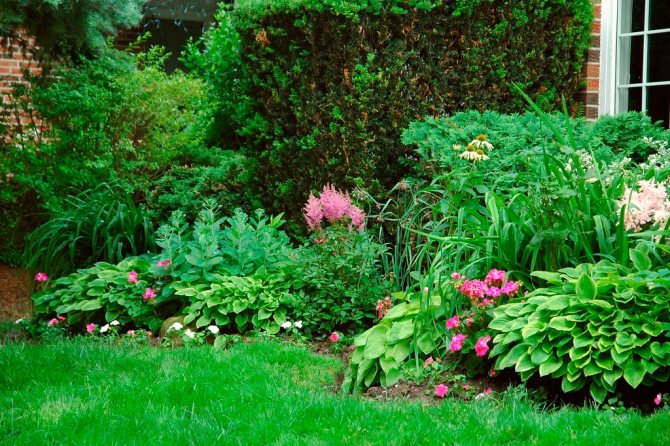
It is most easy to identify light-loving crops (of which the overwhelming number) on your land squares.The problem arises with shady areas, where not all fruit trees and shrubs for the garden are able to grow. In addition, the shadow of the shadow of strife! The shade from the trees is different from the shade on the north side of the house.
As you can imagine, in the second case it is more dense. The shadow of one tree is not like the dull shadow created by a group of plantations. It can be temporary and light (and many plantings perceive it normally), or it can be permanent and dense, creating a huge problem in the selection of a suitable tree or shrub for a low-light area.
You can try to plant light-loving fruit bushes for the garden in a shaded place, but the return from them will be completely opposite in comparison with the expected one, because the crops will only have to adapt to unfavorable conditions for themselves and try to simply survive in them, not to mention their high yield.
It is recommended to plant shade-loving fruit trees and shrubs for the garden in the shade. By the way, some of them, surprisingly, absolutely cannot stand the sun and can get burns from its rays.
Shade-loving fruit trees and shrubs for the garden will enliven shaded places with their foliage, and often not their flowers, but leaves attract attention: original, varied, giving decorativeness to the overall appearance. Factors such as the varied shape of the leaves (kidney, lobed, heart-shaped, lanceolate), their unusual texture (color shades, embossed veins, pubescence) and even the location on the stem (alternate, not covering and not shading each other) are capable of in a sunless corner of the garden to create an attractive composition, from which, moreover, it will subsequently be possible to obtain an excellent, high-quality harvest.
For planting in the shade, shade-tolerant fruit trees and shrubs for the garden are suitable, such as:
- red, pink, white, black, alpine currants
- raspberries
- blackberry
- elderberry black
- hazel
- dogwood
- viburnum
- edible honeysuckle
- barberry
- gooseberry
- male derain
- Apple tree.
Naturally, shade-loving fruit shrubs planted in sunny places for the garden will bear fruit much better, but in the absence of an alternative, these are optimal crops that can grow well in the shade.
Currants are one of the bushes most suitable for growing in the shade. Unpretentious to care for, it multiplies easily and quickly in all its varieties. Large berries will delight compact bushes of such high-yielding varieties as Pygmy, Rusalka, Yadrenaya.
DETAILS: Vigorous black currant variety description
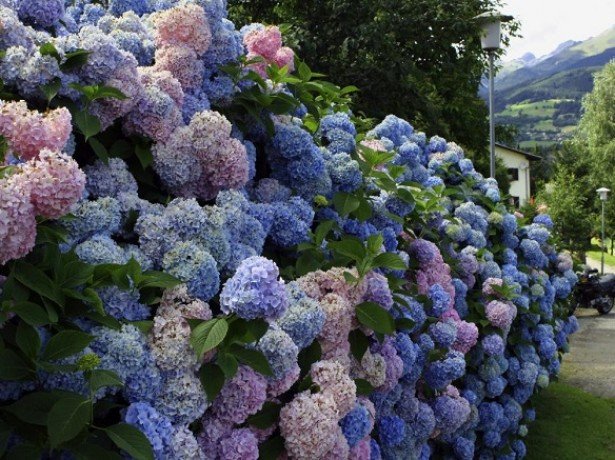

Alpine currant is a beautiful tall (about 2 meters) shrub, characterized by yellow flowers and graceful leaves. Flowering occurs in May, and in July the culture is already able to please with appetizing-looking red berries, in fact, completely tasteless. Currant is a winter-hardy plant, which can be attributed to the advantage of such a culture.
Black elderberry, like other shade-tolerant fruit shrubs for the garden, is an excellent decoration for any site and, in addition, can effectively protect it from pests. It will be very difficult for her to grow in a strong shade, the plant will tolerate partial shade calmly. Black shiny fruits persist on the bushes even after the leaves fall off. The berries, flowers, leaves and bark of the plant have healing properties due to the unique chemical composition.
The very interpretation of the name of the culture (life and youth) indicates the enormous benefits of such a plant. The shrub, which can reach a height of 2.5 meters, has a yellowish brown bark and pale green oblong leaves. Not all fruit shrubs for the garden are characterized by such vitality, the age of honeysuckle in natural conditions can exceed a hundred years.
Such a plant is simply recommended for cultivation in the suburban area due to its powerful anti-inflammatory characteristics, choleretic and diuretic effects, as well as the performance of protective functions, especially in cases of intoxication of the body. Interestingly, the first pruning of the plant is carried out 5-7 years after planting due to its too slow growth. With such a shrub, a plot in the shade can turn into a real berry conveyor, the main thing is to have time to collect a bountiful harvest!
from juicy orange to deep crimson red. Viburnum fruits can hang right up to the snowfall, being especially popular with birds during this period. The beneficial properties of this culture are successfully used in traditional medicine. Fruit shrubs for the garden, in particular, viburnum, will only decorate the summer cottage, giving it a touch of aristocratic nobility and ornamental beauty.
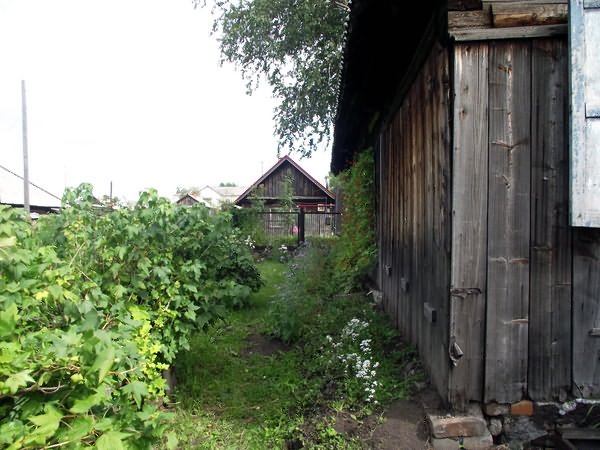

Rosehip (most varieties) is also a shade-loving plant. In the summer, it will delight you with fragrant bright flowers and a swarm of bumblebees useful for the garden in the fall, the plant will give a wonderful harvest of useful berries, which, when dried, will become a healing basis for many medicinal compositions.
Raspberries are tasty and aromatic, a favorite berry of adults and children, the benefits of which are known to everyone. Being a shade-tolerant plant, it is very demanding on the soil in which it grows. The area allocated for its landing should be moderately humid and closed from piercing winds. The varieties most suitable for growing in the shade are Turner, Marlborough, Crimson Mammut.
The compatibility of fruit trees and shrubs in the garden should be considered when planting raspberries and apple trees side by side. This neighborhood is unprofitable for both. The fast-growing root system of raspberries, located close to the surface, takes all the nutrients from the soil, thereby dooming the fruit neighbor to a hungry existence.
Cornel is a rare crop, but this does not detract from its medicinal and technical properties. Being a bush or tree, the height of which is about 2.5 meters, it has a well-leafy, compact crown, giving the area on which it grows, a neat and well-groomed appearance.
The taste of juicy aromatic fruits is sweet, with a certain amount of pleasant sourness. The plant is not capricious to soils, but it bears fruit optimally on well-fertilized light soils. The yield increases incrementally: at the age of 5-10 years, the plant is capable of producing up to 25 kg of fruits, at 15-20 years - from 40 to 60 kg, at 25-40 years - up to 100 kg of beautiful high-quality berries.
Common hazel, which is becoming more and more popular among gardeners due to its delicious fruits, perfectly tolerates shade and grows up to 5 meters in height. Blooming early, before the foliage blooms, it forms graceful earrings at the ends of the shoots, at the sight of which the mood rises in anticipation of the onset of the long-awaited warm days.
Barberry, a branchy thorny shrub, is characterized by tall growth, but its dwarf varieties are most in demand among gardeners, convenient for harvesting and effectively used as an ornamental hedge. The culture is characterized by increased winter hardiness. Sour berries are most commonly used in industry.
Siberian fir
Blooming perennials for a shady flower garden
Early spring
While the "shadow classic" is in no hurry to wake up Haller's corydalis (Corydalis halleri), Siberian kandyk and European (Erythronium sibiricum, E. deniscanis), scaffolds (Scilla), snowdrops (Galanthus) pleases with their flowering for a month. They can be planted in isolated groups or alternately. These species quickly spread by self-seeding and build up the nests of bulbs and tubers, so that in a few years the garden will be decorated with "amateur" bouquets.Their foliage dies off quickly and imperceptibly, it does not have to be masked. Suitable conditions are partial shade, loose soil enriched with leaf humus and the absence of aggressive rhizome weeds (runny, horsetail). Active self-seeding of perennials blooming in the shade often gives the composition a natural naturalness. Such crops should be discarded only if a regular shady flower garden is conceived.


Bloom a little later oak anemone (Anemone nemorosa). Give preference to garden varieties: blue ‘Robinsoniana’, semi-double white ‘Vestal’, pink ‘Fruelingsfee’ - they are larger than natural forms, bloom longer and retain graceful carved leaves all season.
It is worth planting closer to the viewer Jeffersony dubious (Jeffersonia dubia). Its flowers of an unusual lilac shade seem to glow in the garden. Jeffersonia needs a soil structure close to the forest: loose, moisture and air permeable, while not rich. Mulching with a rotted leaf helps. Jeffersonia does not welcome any feeding and other participation of the gardener in his personal life.


Garden forms liverworts noble and Transylvanian (Hepatica nobilis, Hepatica transilvanica) is a true decoration of the shady garden. Neat bushes, abundant, long flowering, the ability to spread by self-sowing - this plant has no disadvantages.
High spring - early summer
At this time it blooms common lumbago (Pulsatilla vulgaris). Interesting and natural forms with large flowers in pink-lilac range, and varieties: 'Rote Gloecke' with ruby-red flowers, 'Papageno' series with narrow numerous petals. Adult bushes bloom for at least three weeks.
The foreground decoration of the composition is mountain soldanella (Soldanella montana), a miniature perennial, completely winter-hardy and in suitable conditions (loose soil, partial shade, drainage), actively growing the curtain.


Good among low shrubs or perennials large-flowered uvularia (Uvularia grandiflora): bluish foliage, elongated yellow bell-shaped flowers and bright lemon yellow autumn color. Undeservedly rarely used in shady gardens spring celandine (Hylomecon vernalis). A rounded low bush of fairly large dissected leaves blooms with bright yellow flowers. In the middle of summer, the bushes lose their decorative effect, the plant retires, so it is better to plant it between large ferns.
Goryanka it is considered to be decorative deciduous plants. However, among them there are brightly flowering species. They are unpretentious and rapidly growing red mountain woman (Epymedium x rubrum) and a number of hybrids Horny Goat Weedlike ‘Lilafee’.
Hybrid primroses cannot be called uncommon, but many varieties from garden centers often fall out in winter. Sustainable garden forms primrose stemless and high worth looking in old gardens and markets. They are no less beautiful and much better adapted to local conditions. The key to success is a well-drained, loose, not too rich soil and regular, every few years, rejuvenation of the bushes.
Among those who love the shadow saxifrage, perhaps the most spectacular flowering in round-leaved (Saxifraga rotundifolia) - a lush fountain of small white flowers on strong peduncles. Additional advantages are winter-green foliage, a neat rounded shape of bushes and self-seeding, very decorating large shady flower beds.
Unpretentious blooming bright stolon-bearing phlox (Phlox stolonifera). This forest species is stable in our conditions, has many varieties, tolerates poverty and dryness of the soil, and is shade-tolerant. By planting a few plants between the bushes, you will eventually get a fairly dense blooming canopy.
Summer
In sparse forests and among shrubs in nature live lilies curly, or marchagon (Lilium martagon). In some varieties, the height of the stems reaches 1.7 m. When growing, you need to take care of deeply cultivated sufficiently fertile soil, mulching, watering in drought. Martagon lilies do not like transplants - they come to their senses for a long time, weakly or do not bloom at all.After planting the purchased bulb, do not be upset if the first flowering disappoints you - give the plant a couple of years to adapt. But then you can not touch the planting with Marchons for a long time - from year to year they will bloom better and better.
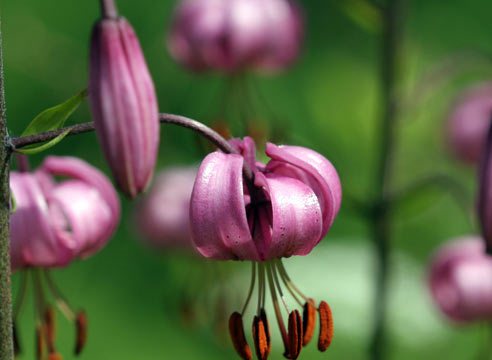

Good for large flower gardens bell point (Campanula punctata) and its varieties. Once popular, then undeservedly expelled from many gardens, an unpretentious perennial, the only drawback (and sometimes dignity) of which is the active "violation of the boundaries" of the territory allotted to it. In the vicinity of large perennials with a powerful root system (podophylls, hosts) he gets along quite peacefully and looks very picturesque.
Blooms almost all summer corydalis sinuous (C. flexuosa) with shallow rhizomes. The moderately growing curtain of carved leaves is adorned with large clusters of flowers in a unique sky blue hue. It develops well in drained areas with loose soil, undemanding to fertility. The ‘Craighton Blue’ can be recommended.
Beginning of autumn
Closer to autumn, a rather large shade-loving perennial blooms - palm-shaped kirengeshoma (Kirengeshoma palmata). A strong, rounded bush with beautiful leaves, numerous bell-shaped flowers will undoubtedly decorate a voluminous composition, but you can also plant it solo. Favorable conditions for abundant flowering - nutritious moist soil and mulching.
Vegetable crops
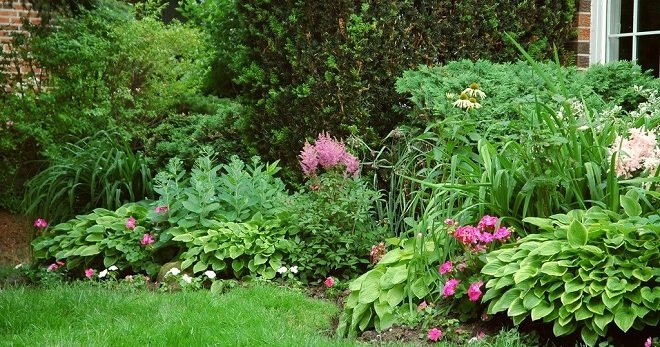

The place in front of the house is often not used in any way due to the fact that the sun does not get there most of the day. However, there are a number of vegetables that are worth growing in the front garden or near a fence on the street side. The following will help to implement the project:
- Perennial varieties of onions. A very practical option, because in addition to juicy greenery, it has decorative properties. For example, chives have huge lilac caps that attract bees.
- Beet. Shade tolerates quite well. The root vegetables will be small but sweet. But not everyone loves coarse large beets.
- Rhubarb. If you water it regularly, then along the fence there will always be luxurious bushes of this plant.
- Ramson. In early spring, people rush into the forest to collect young and very useful wild garlic. If it grows well under trees, then it is quite possible to breed it on your site where light-loving plants do not want to grow.
- Borago. Cucumber herb grows best where the sun's rays hardly penetrate. It does not need special care, it is not afraid of spring frosts, and it is practically not susceptible to diseases and insect attacks. Having dropped her off in front of the house, you can provide yourself with the necessary vitamins.
DETAILS: How to choose the right delicious, ripe watermelon? How to choose a juicy and sweet watermelon?
Borage herb
- Greens and herbs. Any greenery you like will do well in the shade. It is important to provide it with moisture and reserves can be made even for the winter.
- Horseradish. Spicy foliage is actively used by housewives for winter harvesting. And it grows equally well both in the sun and in shady areas.
Shrub of Life - Honeysuckle
The very interpretation of the name of the culture ("life" and "youth") indicates the enormous benefits of such a plant. The shrub, which can reach 2.5 meters in height, has a yellowish brown bark and pale green oblong leaves. Not all fruit shrubs for the garden are characterized by such vitality; the age of honeysuckle in natural conditions can exceed a hundred years. Such a plant is simply recommended for cultivation in the suburban area due to its powerful anti-inflammatory characteristics, choleretic and diuretic effects, as well as the performance of protective functions, especially in cases of intoxication of the body. Interestingly, the first pruning of the plant is carried out 5-7 years after planting due to its too slow growth.With such a shrub, a plot in the shade can turn into a real berry conveyor, the main thing is to have time to collect a bountiful harvest!
Perennials for a shady garden
It is among the perennials that most of all those that prefer areas closed from sunlight. Thanks to this variety, you can create flower beds, flower beds, mixborders and place them in the shade even from the side of the street, even from the side of the patio. Experienced gardeners especially love these plants:
- Hosta grows best away from the sun. And with good soil moisture, its foliage will be simply magnificent, which, depending on the variety, can be monochromatic or variegated. The choice is great. The hosts go well with other perennials and annuals.
Hosta on a flower bed
- Lily of the valley is a classic plant for shaded areas of the garden. Bell-shaped flowers will delight you especially in early spring, when they are especially decorative.
Lily of the valley silver
- Japanese Astilba "Bonn" prefers moist soils. Flowers of bright carmine color have the shape of curls. Astilba needs shade in the afternoon.
Astilba Japanese grade "Bonn"
- The meadowsweet will fill the most seemingly lifeless areas with summer aromas. Flowers of the "Nana" variety delight the eye with a deep pink shade. The meadowsweet prefers moist, well-drained soil.
Palm-shaped meadowsweet
- Brunner perfectly tolerates any degree of shading. It is worth considering that it grows very quickly. Therefore, it is better to plant it in places that require urgent and abundant landscaping.
Brunera siberian
- Ferns. You simply cannot do without this plant in the shady garden. It goes well with other types of plants. Prefers moist soil.
Hosta on a flower bed
Lily of the valley silver
Brunera siberian
Berry bushes for shady areas
Gooseberry, moderately demanding on the soil, grows well in the shade, is characterized by winter hardiness, high yields. Berries are rich in many beneficial substances.
The blackberry, as well as the red rose hips, until a certain time was considered an exceptionally light-loving plant. This statement was disproved empirically: such crops bear fruit perfectly in semi-shaded places, delighting the consumer with their tasty and healthy fruits.
A good way to arrange a shaded corner in the garden is to create there cozy recreation area... Here you can enjoy your time on a hot summer day. The creation of a comfortable and calm environment in such a zone will be facilitated by planting a variety of plants that tolerate well the lack of illumination.
Shade-loving shrubs for the garden have an interesting appearance and delight the eye with beautiful bright flowers during the flowering period.
Lighting is necessary for any plants for active growth and proper development. But different types of plants have different lighting requirements. According to the required amount of light, all plants are divided into the following types:
A photophilous plant will not die if it is planted in the shade, but its growth rate will greatly decrease, and as a result, it will not grow as beautiful as in an area with sufficient illumination. Therefore, for shady areas of the garden with weak insolation, shade-loving plants should be chosen that are adapted to such conditions.
Popular biennials for shaded areas
Red and white currants prefer an open, sunny place. The slightest shading will lead to a decrease in yield and small berries. So don't plant red currants under trees!
The soil needs to be well moistened, but make sure that there is no excessive excess moisture. Be careful that groundwater does not lie close to the surface. If they are found, then such a site for growing strawberries will not work.
So, black currant can withstand a slight darkening, but at the same time it does not tolerate drought at all. Therefore, it can be planted at the bottom or middle of the slope. But red and white currants, on the contrary, prefer illuminated areas.
Actinidia plant: description and photo
Most varieties of currants are self-fertile. However, in order to ensure cross-pollination, which undoubtedly contributes to a significant increase in yield, it is better to plant 2-3 mutually pollinated varieties on the site, placing them in separate rows.
Pits for planting currants are dug 40 × 40 cm in size and 30-35 cm deep. Then the pits are covered by about 3/4 of good fertile soil, pre-mixed with fertilizers. For each planting hole, the following amount of fertilizers is applied in a mixture with soil: humus (or compost, peat) - 1-2 buckets, superphosphate 150-200 g, potassium sulfate - 40-50 g or potassium chloride - 20-25 g.
Before planting, broken, diseased, dried roots are cut to a healthy place. The aerial part of the currant seedlings is shortened to 15-20 cm, the gooseberry up to 10-15 cm so that the currant seedling is planted 6-10 cm deeper, and the gooseberry 5-6 cm than it grew in the nursery, and at the same time after planting, 2-3 buds would remain on each shoot above the soil surface.
The bushes are planted at an angle of about 45 ° to the soil surface. This is necessary so that the shoots can be easily fanned out. Such a layout and a recessed planting contributes to the formation of additional roots on the basis of skeletal branches, obtaining a wider base of the bush with freely located main branches and the renewal of the shoot from the underground noses of the recessed part of the stem and root collar. In addition, the deep planting prevents the roots from drying out. After planting, a hole is made and watered about a bucket per bush.
DETAILS: All shrubs for the garden are perennial blooming all summer: white, pink, sun-loving, undersized and tall
If you do not plan to admire the same picture all the time, but you often don’t want to transplant plants either, you can stop at biennial plants that grow quite well without an abundance of sunlight.
Pansies are best suited for this purpose. In different varieties of this plant, flowers have bright, juicy shades. If you sow several varieties at once, then you can achieve their flowering throughout the warm season.
Pansies (tricolor violet)
A whole carpet can be created from delicate forget-me-nots. They scatter on their own and grow beautifully without sunlight. And the flowers of a blue hue are pleasantly pleasing to the eye.
Beautiful carpet of forget-me-nots
Foxglove thrives in the shade of a fence, house, or trees. But it will delight with its decorativeness only if agrotechnical rules are observed.
Digitalis (digitalis)
If the area permits, then the landing is performed in several rows. The lowest ones are located closer to the roadway, they collect heavy substances that are contained in the exhaust gases of cars. At the fence itself, large trees are planted, the height of which is greater than the size of the fence. Thus, the maximum protection of the site from harmful influences is formed.
Any composition should be not only functional, but also beautiful. The ornamental qualities of plants depend on the conditions in which they are found. The assortment of wind-, gas- and smoke-resistant ornamental plants is presented in the table.
| Plant name | Dendrological features | Dimensions (edit) | Characteristic |
| Norway maple | Deciduous tree | Up to 30 m | Windproof. |
| False-plane maple (Javor) | Deciduous tree | Up to 30 m | Windproof. |
| Field maple | Deciduous tree | 8 - 12 m | Wind-, gas-, smoke-resistant. |
| White willow | Deciduous tree | 5 - 8 m | Wind-, gas-, smoke-resistant |
| Willow of babylon | Deciduous tree | 4 - 8 m | Wind-, gas-, smoke-resistant. |
| Small-leaved linden | Deciduous tree | 15 - 20 m | Wind-, gas-, smoke-resistant. |
| Common hornbeam | Deciduous tree | 10m | Wind-, gas-, smoke-resistant. |
| Red oak | Deciduous tree | 20 m | Wind resistant (at a young age). |
| Warty birch | Deciduous tree | 10m | Wind resistant |
| Mountain ash | Deciduous tree | 5 - 8 m | |
| Thuja western | Coniferous tree | 8 - 12 m | Wind resistant. |
| Spruce prickly | Coniferous tree | 20 m | Gas resistant. (Resists wind at a young age. Over time becomes windblown). |
| Red cedar | Coniferous shrub | 2 - 3 m | Wind-, gas-, smoke-resistant. |
| Juniper Cossack | Coniferous shrub | 1.5 - 2 m | Wind-, gas-, smoke-resistant. |
| Juniper chinese | Coniferous tree | 2.5 - 3 m | Wind resistant. |
| Barberry Thunberg | Deciduous shrub | 2 - 2.5 m | Wind-, gas-, smoke-resistant. |
| Common privet | Deciduous shrub | 2.5 - 3 m | Wind-, gas-, smoke-resistant. |
| Hawthorn prickly | Deciduous shrub | 3 - 4 m | Wind-, gas-, smoke-resistant. |
| Five-leaf maiden grape | Wood vine | 10 - 15 m | Wind-, gas-, smoke-resistant. |
| Tri-pointed grapes | Wood vine | 15 - 20 m | Wind-, gas-, smoke-resistant. |
When choosing a plant assortment, you need to analyze the place for illumination, soil characteristics, attitude to moisture and other environmental properties. To do this, consider the position of the site on the cardinal points and the influence of buildings and structures that are within the garden and outside it.
Differences between shrubs and trees
Shrubs, used in landscape designThat is, they constantly enjoy the attention they deserve. Therefore, in numerous nurseries there is always a wide selection of these popular plants.
There are intermediate plant forms between shrubs and trees. The main difference lies in the presence of the main, main trunk, in different directions from which multiple branches grow. For example, the following plants can grow in the form of a tree or a bush:
- Nut.
- Some types of elms and willows.
- Hawthorn.
It depends on how they are pruned and the conditions in which they grow.
For example, a dark crimson forest beech, with regular pruning and growth adjustments, can be turned into a shrub and used as a scenic hedge. This hedge will not shed its brown foliage during the winter. But if allowed to grow freely without pruning, such a beech will soon become a tree.
What annuals to plant in the shade
Among annual plants, there are not so many representatives that can put up with the lack of sunlight. For this purpose, you can use:
- Balsam. It will grow well in partial shade. In the complete absence of the sun with flowers, it will not please you.
Waller's balsam
- Fragrant tobacco is a luxurious plant that will best reveal all its decorative properties in diffused light. It can be placed between saplings.
- Ever-flowering begonia looks beautiful in shaded flower beds and in single plantings.
Waller's balsam
What shrubs can be chosen for shady corners
Any shrubs, in whatever part of the garden they grow, must perform at least one of the following functions:
- decorate the garden;
- decorate some outbuildings;
- be the background for flowering plants (for example, hydrangea looks brightest against the background of conifers, and astilbe - against the background of the host);
- serve as a hedge that keeps out dust, noise and wind, and also hides you from the prying eyes of neighbors.
Here, based on what functions the shrubs you have chosen will perform, and you should choose them.
Shrubs for shady places can be divided into three types:
- decorative (meaning flowering) shrubs;
- fruiting (otherwise - berry);
- deciduous (shrubs decorated with their foliage).
With this classification in mind, we will choose shade-tolerant shrubs.


Unusual, rare and wonderful vegetables in the garden
The more different vegetables to plant in the garden, the more interesting it will be in the summer on the site. With some effort, you can grow not only traditional crops, but also rare, outlandish plants:
- Pepino (melon pear). In temperate climates, it is grown as an annual. Produces fruits that taste like a mixture of melon, pumpkin and cucumber.


- Melotria. Fresh roots and canned fruits are eaten. An actively climbing liana, strewn with fruits with an unusual color, is often used for vertical gardening.


- Tladianta (red cucumber). The plant comes from the Ussuri taiga, so its tubers are able to winter in the soil. The taste of the fruit resembles a carrot-pumpkin cocktail.


- Luffa. Young fruits are suitable for eating, while ripe fruits are suitable for making soft and tender loofahs.


- Romanesco (cauliflower variety). It is grown no more difficult than white cabbage, but has a delicate nutty taste.
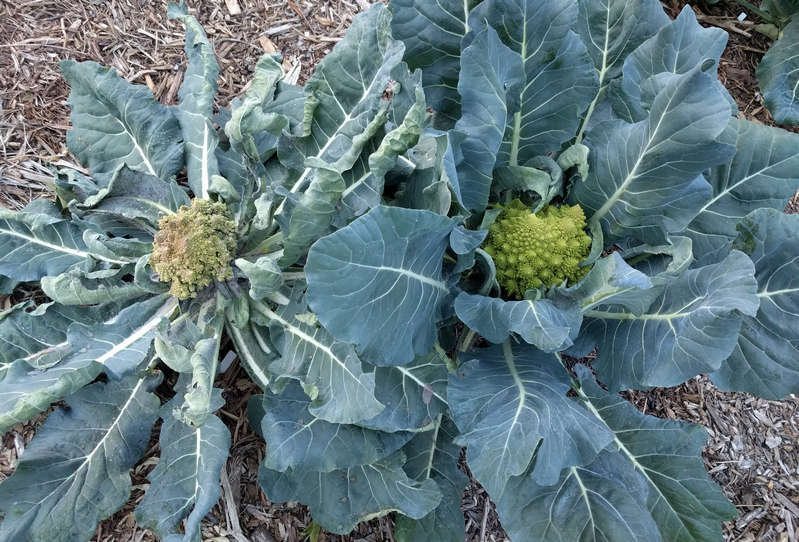

- Purple (blue) potatoes. The pulp of root vegetables is colored deep purple. Mashed potatoes or fries made with blue root vegetables have a pleasant potato flavor.
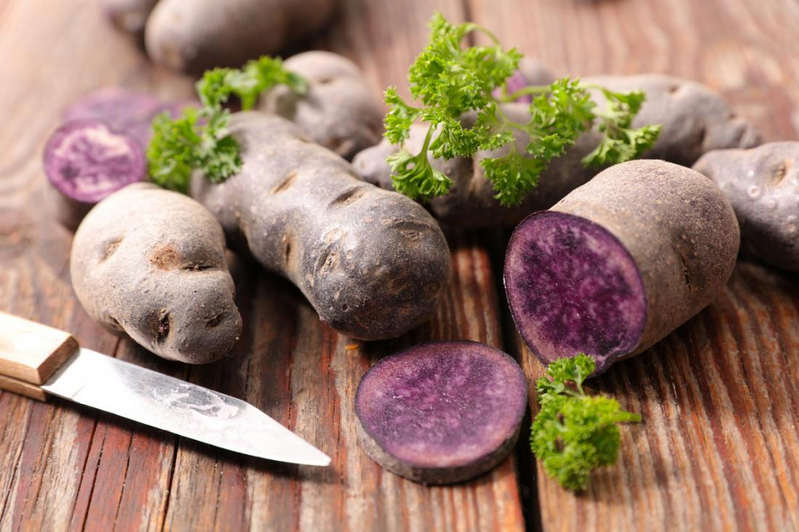

With proper care, wonderful vegetables planted in the country or in the garden will yield unusual fruits and become the envy of neighbors.
Sun exposure
Dacha and garden plots allow the townspeople to join the rewarding business of growing plants, working physically, but resting their souls. And, although almost all fruits, herbs and vegetables can be bought in the store all year round, many prefer to grow them on their own plots. A crop grown by our own hands is both healthier and tastier.
And you look around, which trees grow well with neighbors, and they will take root with you with proper care.
See what grows in summer cottages in your region, what is sold in season for planting, what seedlings, then plant.
Types of flower beds
In order to arrange a flower garden in front of the house with your own hands, you need to know a few rules. The arrangement of flower beds makes you wonder if there is a shadow around, and what creates it. There are different types of flower beds:
- Rabatka. It is she who plays an important role in masking structural defects. Lush plants cover all errors and irregularities.
- A heterogeneous flower bed that stretches along the path. Plants in the form of a border always look good. These are such plants as hawthorn, petunias, marigolds.
- Against the background of a lawn under a flower garden, "flowering geometry" will look good. The shape of the flower bed should be a perfectly flat figure: a square, a circle, an oval, etc. Usually they are located somewhere on a hill, which makes it possible to better see the flowers.
- Mixborder. Like the Optina flower garden, it is aimed at living in harmony and joy. Flowers do not fight for water and do not occupy someone else's space, they have enough sunlight.
- The flowerbed is the main accent of the garden. It should be based not only on bright catchy flowers, but also on small ones of calmer tones. So for the background, choose blue, green, purple lilac colors. And to create elegance and attractiveness, yellow, red, orange and pink. White, pale blue and pale yellow flower will help to advantageously decorate empty spaces. The design of a flower garden makes you take into account the laws of color, which can make the soul rejoice, and the gaze dwells on every moment. The Optina flower garden is designed according to these very principles, as evidenced by its popularity. The color combinations there inspire and pacify, rather than create aggression.
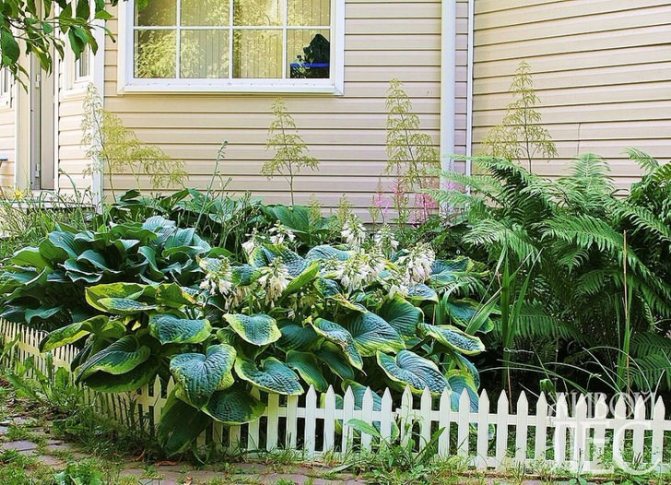

Even on a small, shaded area in front of the house, you can recreate a taiga green island by planting unpretentious fern bushes, hosts, astilbe.


A stunted hosta bush, similar to an ancient giant tortoise, will delight gardeners with 100 shades of green: from pale green to Moroccan emerald.
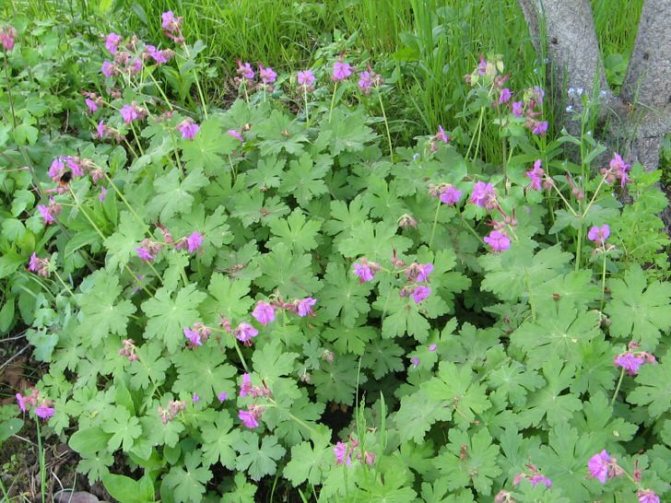

The soft green bather with purple bells easily takes root in a shady, damp area of the garden.
Flowers and ornamental plants
In shaded areas of the site, pansies, forget-me-nots, lilies of the valley, irises and fragrant tobacco will develop well and bloom. But mostly decorative-leaved plants are planted.
- Brunner has a rich palette of colors and is unpretentious in care.
- Hosta is distinguished by a variety of shapes and colors of leaves. The blue and blue varieties prefer deep shade. In the second half of summer, the hosta throws out tall peduncles.
- Periwinkle is a brightly blooming perennial that quickly covers the area with air growth.
- Badan loves shading, forms whole carpets of dense leaves and blooms beautifully in early spring.
- Ledum - "forest rosemary", "swamp stupor" - fragrant and effectively blooming, but poisonous plant.
Various types of shade-tolerant and shade-loving plants can be purchased at the nursery. But there is also a completely inexpensive option - to walk to the forest belt, from where many resourceful summer residents bring their original "inhabitants" to their plots:
- fern - a plant with high decorative qualities, unpretentious and feeling great in the shade, looks very impressive, does not require maintenance and drowns out weeds;
- woods, forest violets, snowdrops, clefthoof (grow well only in moist soil);
- blueberries and blueberries.
Not everyone succeeds in taming the representatives of the forest flora, but in most cases the plants take root and master well in a new place. To reduce the adaptation time, it is better to carry them with an earthen lump, and it is most convenient to transport them in a wheelbarrow.
Advice
If the site is not only shaded, but also too wet, then you can create a kind of alpine slide for the plants: lay drainage in the first tier (branches, gravel, sand), in the second - turf, peat, small chips (for volume), on top - a layer of soil, and not necessarily fertile.
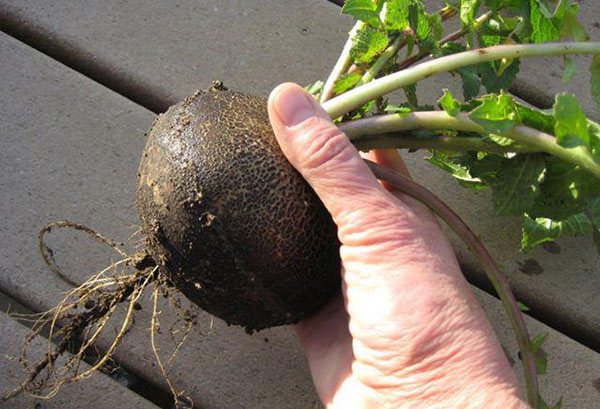

What to plant?
In shady areas, it is advisable to grow mainly plants characteristic of forest communities. The best representatives of shade tolerance are hazel, chokeberry (chokeberry), alpine currants, types of barberry, gooseberries, relatively shade-tolerant dogwood, irga, viburnum. Of the vines that beautifully decorate the walls of a house or a fence, you can recommend the types of actinidia (acute, kolomikta) and lemongrass, from ornamental plants in the openwork shade of trees, types of hydrangea and rhododendron will feel good, boxwood, snowberry white, mahonia holly, euonymus will feel good (European and winged), and the yew is even shade-loving.
We grow the main fruit
Almost all fruits are light-requiring. The most in need of lighting are southern cultures - peach, apricot, sweet cherry, then apple, pear, but cherry, cherry plum and plum are more shade-tolerant. Cherries and cherry plums can bear fruit satisfactorily even with relatively strong thickened plantings, while in the apple tree in such cases fruiting is observed only in the upper part of the crown.
Berry plants are more shade-tolerant, but even with a lack of light, they greatly reduce the yield, and shading has the greatest effect on strawberries and raspberries and weaker on the gooseberry harvest. Black currants are more shade-tolerant than red ones. Red currants tolerate lateral shading well, but demanding overhead light.
Coniferous plants
Also, in your garden, you can plant several types of low shade-loving coniferous trees. Conifers are versatile and will be a good addition to any type of garden. They can be used alone or as part of various compositions.
Ephedra are undemanding to the planting site and do not need complex care.If you buy a frost-resistant tree, then it will not require shelter for the winter. Only with the onset of spring is it worth covering it a little from the direct sun, if it is not planted in a shady area of the garden. Conifers do not require frequent feeding.
Yew and Juniper
A coniferous plant like the pointed yew is the most shade-tolerant of all. This type of yew got its name from the pointed spines at the top of the crown. It is characterized by an extremely low growth rate, tolerates frost quite well. Best adapted for wintering small decorative formsbut they need protection from bright sunlight in spring. In the middle lane, this is the only type of yew suitable for shearing.
Juniper is a numerous genus of conifers, including 75 species. To date, many undersized varieties of this shrub have been bred. They grow actively and look extremely impressive in the garden. In the USA, creeping junipers are very popular. And now they are gradually winning the love of Russian gardeners.
There are medium-sized junipers, and even treelike junipers up to fifteen meters high. For all types of junipers, the characteristic qualities are:
- Undemanding care.
- Frost resistance.
- The ability to grow in any soil.
- Ability to tolerate lack of moisture.
28
Basic rules for arranging a flower garden
Flower garden decoration requires advance planning. Flowers have a peculiarity to delight with their beauty one by one, in addition, the height or width of some plants may interfere with showing themselves in all their glory to others.
To do this, you need to analyze the following parameters:
- flowering time;
- the degree of overgrowth;
- the degree of endurance of low temperatures;
- drought resistance;
- type of soil for a flower garden: alkaline or acidic;
- the size.
Shadow under the trees
Some tree species create a light openwork shade, but at the same time they greatly dry the soil and this factor must be taken into account, because most shade-tolerant crops prefer moisture. Grow well in shade and dryness:
- bought broadleaf,
- periwinkle,
- mountain woman,
- anemone forest.
- spring primrose,
- badan,
- comfrey,
- garden geranium red-brown or Balkan.
- cereals.
Under a pine tree, where sandy or sandy loam soil:
- lilies of the valley,
- periwinkle,
- tenacious
- violets.
Soil preparation
To get the expected result, you need to responsibly approach selection of the right shrubs... Certain plant species require a specific soil composition.
Due to the fact that many shade-loving species are adapted to forest conditions, attention should be paid to soil preparation when planting them. The soil must be nutritious and neutral in acidity. If these conditions are met, the plants will easily undergo a transplant and eventually grow into beautiful, lush bushes.
A site for planting plants should be planned in advance so that they do not hinder each other during the growth process. It is worth choosing shrubs taking into account the height of adult plants. So, undersized shade-loving decorative bushes are better suited for decorating and strengthening slopes and embankments. The shape, size, and flowering time of many plants can be controlled with regular pruning.
Free spaceremaining between shrubs can be filled with groundcover or shade-loving flowers. This will not only look beautiful, but will also prevent the soil from drying out quickly. For these purposes, ordinary lilies of the valley are very suitable. In early spring, they will delight the eye with delicate beautiful flowers, and the rest of the time - with beautiful leaves of juicy green color. Lilies of the valley tend to grow actively, which eliminates the need for additional annual planting of new plants.
List of vegetables for planting in the garden for the winter
For planting vegetables in the garden for the winter, it is important to carefully select the planting material. Here is a list of crops that are highly likely to withstand winter frosts and will delight in spring with a good harvest:
- Onion
- Garlic
- Radish
- Beet
- Carrot
- Dill
- Parsley
- Cilantro
- Spinach
- Salad
- Celery
- Parsnip
- Coriander
- Sorrel
It should be remembered that when planting vegetables in the garden for the winter, planting material is sown only dry, you cannot soak the seeds. In addition, the total number of seedlings should be one third more compared to spring plantings. This is due to the fact that some of them will not germinate.
In the spring, the main problem for seedlings is most often the dense crust of the earth that has caked during the winter, which does not allow the shoots to break through to the sun. Therefore, after the snow melts, you need to carefully loosen the planting sites in the garden, breaking the crust if it does form.
Rate the article:
Composition example
To create a flower bed in the shade that blooms all summer long, you can competently "mix" plants with different, albeit short, flowering periods.
For example, a composition for a very wet partial shade:
- Kaluzhnitsa - low bushes, 30-40 cm, blooms in early spring, from late April to May, for 2-3 weeks. There are terry varieties.
- Lungwort.
- Forget-me-not.
- Astilba.
- Hosts.
- Garden geranium. The best species for shade: Himalayan, marsh, meadow.
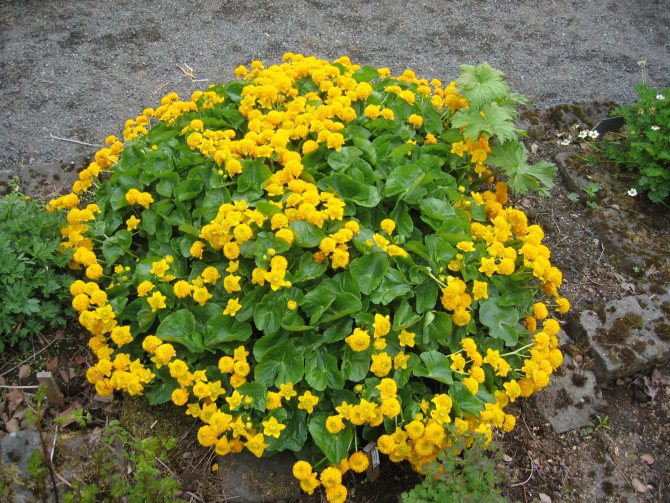

On the photo Terry Kaluzhnitsa - Caltha palustris 'Flore Pleno'
Rules for creating continuous flowering
Plants can grow greatly over time, and the beauty of the flower garden in front of the house will hide in greenery, so it is important to plant perennials at a great distance from each other. Initially between them, you can fill in annuals.
Until the perennials grow to the desired size, it will be seen whether the gardener has chosen the right place for these plants.
Flowers that will fade and lose their attractiveness are best surrounded by shorter plants. For example, hosts or daylilies can be planted near daffodils.
Flower garden design in front of the house
Each gardener, planting flowers, pursues the goal of enjoying the beauty of the surrounding greenery, to be in harmony with nature.
You can plant a magnificent flower garden in front of the house with your own hands, but before starting work, you need to make sure that the scheme corresponds to the real area, mark the boundaries, and fertilize the soil.
It is advisable to plant plants not thickly, as they will grow.
At the end of the work, you need to set the border, because there is a danger of trampling on future beauty.
If you are not lazy to take care of flowers near the house, water and fertilize the ground in a timely manner, remove weeds and faded buds, then the arrangement of flower beds in the garden will create a small corner of happiness that will delight all inhabitants with its appearance.
The specifics of growing
All plants adapt to light conditions, but a healthy plant will only grow in conditions that suit its needs. Therefore, when placing fruit and berry plants in the garden, it is necessary to take into account their requirements for lighting conditions.
You need to understand that with a lack of light, if fruits are tied, they have a mediocre taste, fruiting shifts to the periphery of the crown, and also fruit twigs begin to die off quickly, which leads to bare trees. Shoots become poorly developed, with long internodes, leaves are thin, light green, and the root system suffers.
Usually, plants in the shade bear little fruit, due to poor maturation of the wood, they cannot normally go through the hardening period and are damaged by winter frosts, frost cracks appear on them more often.
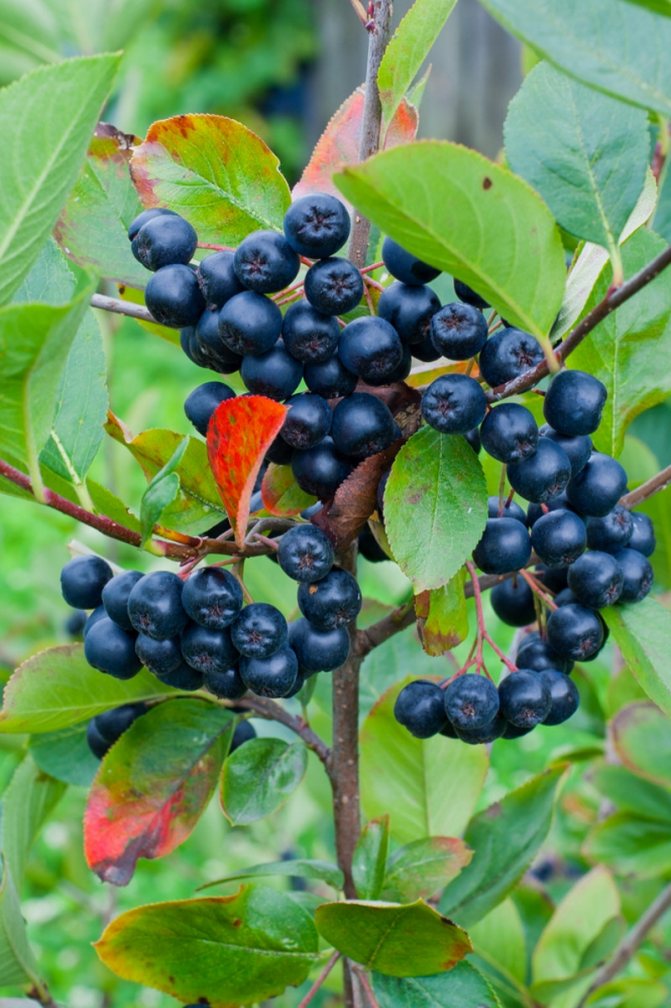

Vines for shade
Most popular for shady areas:
- round-leaved wood pliers - versatile, grows both in good lighting and in the shade, and in partial shade. However, it does not bear fruit in dense shade;
- actinidia kolomikta - beautiful decorative leaves of variegated variable color;
- ivy - grows well even with strong shade.
It is worth noting that most vines, being plants dependent on a support, which in nature is usually a tall, shading tree, are used to a lack of light.
This even applies to such a spectacular culture as clematis... Many large-flowered hybrids like coolness, no higher than 25 degrees, and light or shade is secondary for them and shade may even be preferable if it gives coolness.
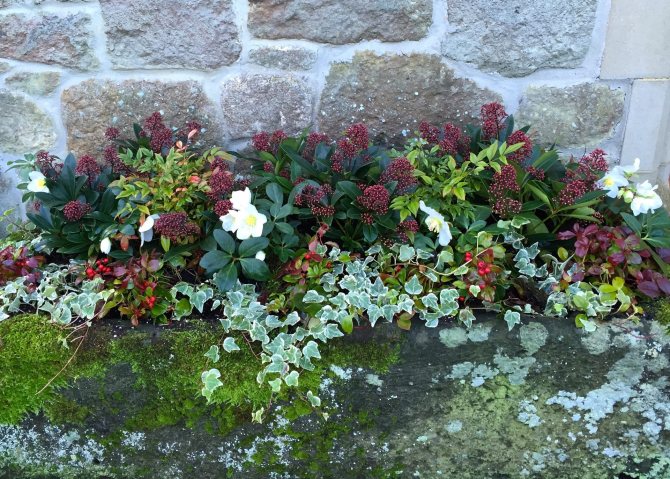

Gaulteria (with red berries), skimmia, hellebores and ivy.
The advantages of mixed plantings
Rational use of the usable area and the correct placement of garden crops will help you get a bountiful harvest. Compared to the traditional method, mixed planting of vegetables in the garden has many advantages:
- Saves space in the garden.
- Vegetables and herbs from different families draw different nutrients from the soil, which prevents soil depletion.
- Siderate crops planted in compacted beds improve the structure of the soil and enrich it with nitrogen.
- Companion plants often act as living mulch and protect against drying out and soil erosion.
- The proximity of different crops contributes to an improvement in taste and an increase in the size of ripening fruits.
- In compacted plantings, there is practically no room for weed growth.
- Correctly selected accompanying crops will restrain the development of fungal diseases, scare away pests with their aroma and attract beneficial insects. For example, onions will scare off a carrot fly, and carrots will scare off an onion.


In mixed (combined, compacted) plantings, the main culture and the satellite plant are planted. These can be green manures, accompanying vegetables, herbs and even flowers - they will create favorable conditions for the growth and ripening of fruits around the main neighbor.
Shade-loving shrubs. Twilight plants
A special decoration of shrubs is juicy, colorful fruits, which, however, are not always edible.
Many types of honeysuckle are shade-loving shrubs. Tatar honeysuckle deserves special attention, unpretentious and beautifully blooming, having many garden forms that differ in the color of the petals (from white to bright red).
No less attractive is the rare Alpine honeysuckle with bright red fruits and a very dense crown.
The amazing "Poppy" can grow in the form of a small tree. Edible honeysuckle is also popular, which is more appreciated for its early, spicy bitter and very healthy berries.
Hazel and euonymus
The well-known common hazel grows well in the shade. For decorative purposes, it is better to use cultivated garden forms with different leaf colors.
Euonymus can be in the form of shrubs or small trees. They attract attention especially in autumn due to their bright original fruits and beautiful color of the leaves. The warty euonymus has pink fruits and leaves. And the winged spindle tree has crimson-red tones.
Viburnum and elderberry for a shady garden
Various types of viburnum are also distinguished by high shade tolerance. They are decorative at any time of the year. Viburnum vulgaris is a good choice for the garden. And its healing fruits help with many diseases.
Evergreen, blooming in winter, laurel viburnum is attractive with its white and pink flowers. Ideal for inexperienced gardeners.
Elderberry - many shrubs of this genus have long been used as ornamental, as food, and as medicinal plants. Elderberry red or cluster is distinguished by its particular unpretentiousness, and is also capable of scaring off mice well. Black elderberries are edible. It is advisable to plant this type of plant in a place protected from the wind.
Hydrangeas, Mahonia and Mexican Jasmine
Perfectly decorate a site in partial shade of hydrangeas. They begin to bloom in early summer and until autumn. Their beautiful, large inflorescences will also be attractive in dry bouquets.Not capricious and easy to care for - tree hydrangea. The most spectacular and suitable for cultivation, for example, in the middle lane, is the panicle hydrangea.
Especially noteworthy is its large-colored form - "Grandiflora". The Bretschneider hydrangea looks beautiful with large white flowers, which then turn into purple.
Mahonia holly is a compact evergreen shrub with beautiful shiny feathery leaves. In early spring, it is decorated with bright yellow inflorescences, and at the beginning of autumn, with dark blue edible berries.
Shade-loving shrubs include Mexican jasmine with orange-scented flowers. After spring blooming, it can be trimmed short.
Cherry laurel, keriya and cotoneaster
Flowering shrub
The evergreen shade-loving shrubs include medicinal laurel with glossy dense leaves. In June, it is decorated with tassels of fragrant white flowers. This is a rather rare plant for gardens in the middle zone due to its low frost resistance. For reliable wintering, it must be covered.
Keriya japonica is distinguished by long spring-summer flowering, and sometimes repeated autumn flowering. True, keria blooms better in the sun. But it also feels pretty good in the shade. Blooms in large yellow inflorescences.
The "Pleniflora" shape is distinguished by gorgeous double petals. Keriya does not tolerate frosts and therefore it is better to shelter and protect it from the cold wind for the winter.
Cotoneaster refers to deciduous or evergreen plants. These shrubs are very diverse in shape and size. They can be six-meter trees, and low-growing stanches.
Stay on the bush for the winter or fall off. Despite such differences, cotoneaster has common features for which they are appreciated and loved. All plants have very beautiful leaf color in autumn and elegant fruits. The shrub blooms in May-June. White flowers emerge from pink buds.
How to improve the yield in case of sun deficiency?
In addition to tree maintenance and fertilization, gardeners resort to tricks like mulching the soil between vegetables with reflective sheeting. It comes in different shades, for example, white is universal, and red is best suited for growing tomatoes. Metallized film is most effective because it reflects the most light. With such an assistant, the list of things that can be planted in the shade at the dacha expands significantly.
After all, the advantages of using this unconventional type of mulching are as follows:
- an increase in the amount of light in the vegetation cover;
- local increase in air temperature;
- increasing the intensity of photosynthesis, and hence the growth of culture;
- reduction of damage to the beds by some insects (in particular, aphids and thrips);
- increasing the quantity of the crop and its quality.
In addition, it must be borne in mind that the soil in the shade warms up worse, so you cannot plant the plants ahead of time, otherwise they may freeze out.
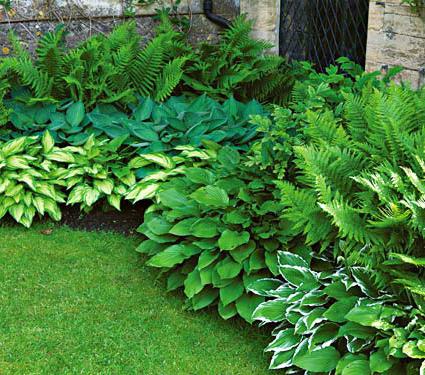

Types of colors for shady areas
You can plant apricot, quince, cherry.
- A pear is a rather whimsical plant: either it does not like the soil, then there is too much water in the ground, then, as they say, the wind is not blowing from there. If the groundwater in the garden approaches the surface of the earth closer than 1.5 m, you will probably have to do without pears.
- Not so long ago, new items appeared on the market, which immediately gained popularity as wonderful plants for the shady zone of the garden. These are ever-flowering begonia and Waller's balsam. These plants used to be grown as houseplants. New varieties, more cold-resistant and with a variety of colors, are offered for growing in the garden. These species, especially ever-flowering begonia, are just a godsend for flower beds in problem areas of the garden.
The queen of the shadow can be called the host. This amazing plant develops well and blooms in any shade, creating large clumps of green or variegated leaves.Together with the host, you can plant a compartment. Ferns are also shade-loving plants, although they do not bloom, their beautiful leaves are very decorative and go well with any other plants.

